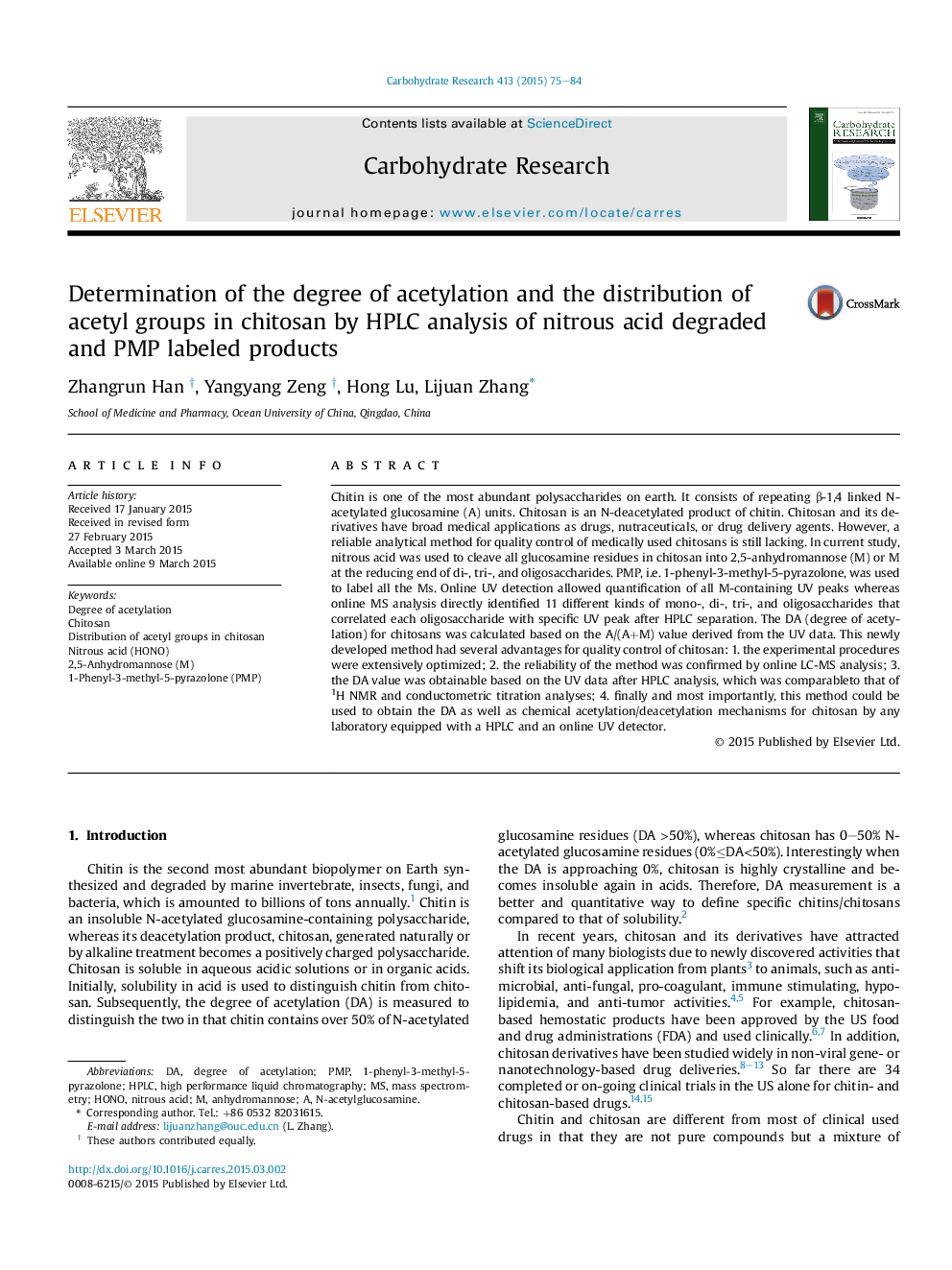| کد مقاله | کد نشریه | سال انتشار | مقاله انگلیسی | نسخه تمام متن |
|---|---|---|---|---|
| 1387596 | 1500838 | 2015 | 10 صفحه PDF | دانلود رایگان |

• A novel method for determination of the degree of acetylation (DA) in chitosan was developed.
• The distribution of acetyl groups and acetylation/deacetylation mechanisms of chitosan were also revealed.
• The reliability of the method was confirmed by online LC-MS analysis.
• The accuracy of the DA measurement was improved compared to established methods.
• This method could be used by any laboratory equipped with a HPLC and an online UV detector.
Chitin is one of the most abundant polysaccharides on earth. It consists of repeating β-1,4 linked N-acetylated glucosamine (A) units. Chitosan is an N-deacetylated product of chitin. Chitosan and its derivatives have broad medical applications as drugs, nutraceuticals, or drug delivery agents. However, a reliable analytical method for quality control of medically used chitosans is still lacking. In current study, nitrous acid was used to cleave all glucosamine residues in chitosan into 2,5-anhydromannose (M) or M at the reducing end of di-, tri-, and oligosaccharides. PMP, i.e. 1-phenyl-3-methyl-5-pyrazolone, was used to label all the Ms. Online UV detection allowed quantification of all M-containing UV peaks whereas online MS analysis directly identified 11 different kinds of mono-, di-, tri-, and oligosaccharides that correlated each oligosaccharide with specific UV peak after HPLC separation. The DA (degree of acetylation) for chitosans was calculated based on the A/(A+M) value derived from the UV data. This newly developed method had several advantages for quality control of chitosan: 1. the experimental procedures were extensively optimized; 2. the reliability of the method was confirmed by online LC-MS analysis; 3. the DA value was obtainable based on the UV data after HPLC analysis, which was comparableto that of 1H NMR and conductometric titration analyses; 4. finally and most importantly, this method could be used to obtain the DA as well as chemical acetylation/deacetylation mechanisms for chitosan by any laboratory equipped with a HPLC and an online UV detector.
Figure optionsDownload as PowerPoint slide
Journal: Carbohydrate Research - Volume 413, 2 September 2015, Pages 75–84